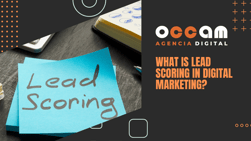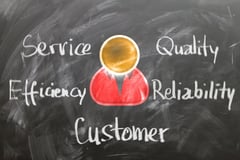what is the customer journey and how to create it?
Index Content
Before making a purchase, there must always be a process in which the customer has a need and discovers that it can be covered by the brand. Nobody buys without a prior acceptance process.
what is customer journey?
This is what encompasses all those phases that a person goes through until the sales process arrives, from the point at which the customer discovers that they have a need. This process does not have an established duration, it can last minutes or even months or years, depending on the customer and the need they have to cover. It is not the same to think about buying a pair of trousers as it is to buy a car, the decisions you have to make are different, it is not the same expense nor is it of the same importance to take the same amount of time.
In conclusion, it is a buying process through which the customer discovers a need and decides to cover it through the products or services of a particular brand. Previously it was believed that the buying process of a customer coincided with the sales process, but there is much more before that, a consumer who discovers a need, first researches and informs himself before embarking on any purchase process. And without this part of the process, we will not understand the consumer journey or what their needs are.
The customer journey also helps us to better define our buyer persona, which is the centre of our strategy as we focus our entire content strategy on it, apart from the fact that all the actions we carry out in our marketing strategy are designed around the buyer persona.
The buyer persona has a series of pain points that are those that make them perform one action or another:
- Motivations
- Problems
- Needs
- Frustrations
- Opportunity
This list and other pain points are what move buyer personas, what make them take certain actions or not. For example, if a person gets a good job far from their place of residence and does not have a car to travel there, this will create a need and they will end up looking for where to buy a car and will compare different places before deciding on one brand or another.
Phases of the customer journey
There are three phases within the customer journey, let's look at what happens in each of these.
- Discovery: Users find our company while they are looking for solutions to a problem or need they have. It is at the stage of finding out about the topic in question that potential customers discover us.
- Consideration: Once they have done their research they will have several fronts open and will be deciding between choosing us or our competition, they have to weigh up which is the best decision to meet their need. They must, with the information they have obtained from your brand, decide that your product or service is the best one to solve their problems.
- Decision: Once they have considered the fronts they have open, they decide on one product or another, trusting that this product will end up solving their problems, thus fulfilling their expectations.
how to create a customer journey?
The first thing to clarify before starting this point is that there is no specific model that is applicable to all companies, as each product or service has a different life cycle for each customer. But let's look at a generic way of creating a customer journey step by step.
- Analyse your customer satisfaction
The best way to make a customer journey is through research, depending on the type of company, there will be information of various types, online and offline.
- Online: From the online point of view what you can get is to find out many actions that users perform that can help you to analyse their behaviour, for example, what attracts your potential customers to your website, the interactions they have had with your social networks, and much more.
- Offline: On the other hand, also useful although less important, are all the actions that your customers perform with your brand outside the internet, such as what questions they ask when they call on the phone, existing recommendations through word of mouth, etc.
All this data can offer us a lot of information about our potential customers that help us to improve and optimise our strategy. And to obtain this data there are hundreds of tools, including free tools such as Google Analytics. If, according to the data you have obtained, most of the users stop filling in thelanding page form in question number 6, it may mean that they do not want to provide this information or that it is taking too long.
- Define the phases of customer behaviour
Here is a list of the most common phases that customers usually go through in the buying process.
- Discovery: The first phase the customer goes through is when they discover that your brand exists and can solve a problem or satisfy a need.
- Comparison: Once they have discovered you, it is very difficult for them to choose you from the beginning, the user always continues researching to be able to compare between various options.
- Choice: Leads make a definitive decision for your product or brand.
- Purchase: Once they have made their choice and have opted for your product, it's time to buy it.
- Recommendation: Finally, if the customer is satisfied with the purchase, they will recommend the product.
- Understand your customers' objectives
Often we do not give importance to the real objectives and motivations of our customers, if they are looking for information and when they enter your blog they do not find it, you will leave disenchanted. For this you have to focus on the content marketing strategy. - Identify the points of contact
As a company you should create a map with the different points of contact with which we have contacted our customers, in order to adapt them and optimise the communication strategy. - Use the data
Your customer data is more useful than you might expect. First of all, it helps you to build customer loyalty and keep them buying, but it is even more useful to use it for future customer acquisition strategies.
In short, you have to take your customers into account and analyse their behaviour in the different purchase phases. Don't wait any longer and start creating your customer journey.

-1.webp?width=200&name=imagotipo_occam%20(1)-1.webp)


